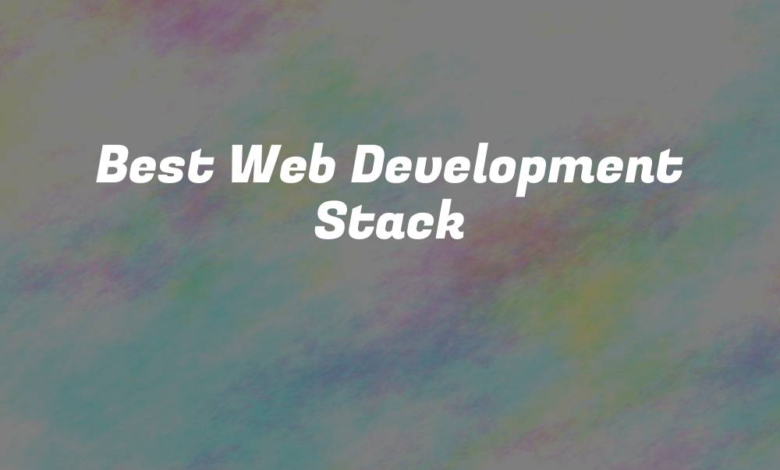
Selecting the “best” web development stack involves considering various factors, including project requirements, scalability needs, performance expectations, developer expertise, and budget constraints. Each stack has its strengths and is suitable for specific use cases. Here, we’ll explore popular web development stacks and the considerations to help you choose the most appropriate one for your project.
- MEAN Stack (MongoDB, Express.js, Angular, Node.js):
- MongoDB: A widely-used NoSQL database known for its scalability and flexibility, making it suitable for handling large amounts of unstructured data.
- Express.js: A lightweight, flexible backend framework for Node.js, simplifying the process of building robust, scalable server applications.
- Angular: A comprehensive frontend framework maintained by Google, offering a structured approach to building dynamic, single-page web applications.
- Node.js: A JavaScript runtime environment that allows for event-driven, non-blocking I/O operations, ideal for building scalable and efficient server-side applications. Considerations: The MEAN stack is excellent for real-time applications, particularly those requiring high interactivity and real-time updates, such as social platforms, collaboration tools, or live dashboards.
- MERN Stack (MongoDB, Express.js, React, Node.js):
- MongoDB: Same as in MEAN stack, offering flexibility and scalability.
- Express.js: Same as in MEAN stack, providing a robust backend framework for Node.js.
- React: A popular, high-performance frontend library maintained by Facebook, focusing on efficient rendering and a component-based architecture.
- Node.js: Same as in MEAN stack, enabling server-side JavaScript development. Considerations: MERN stack is great for building efficient and dynamic user interfaces, making it suitable for applications with high user engagement, such as e-commerce platforms, content-driven websites, and progressive web apps.
- LAMP Stack (Linux, Apache, MySQL, PHP):
- Linux: A stable, open-source operating system forming the foundation of the stack.
- Apache: A widely-used web server providing a secure and customizable environment for hosting web applications.
- MySQL: A popular relational database management system known for its stability, reliability, and ease of use.
- PHP: A server-side scripting language suitable for building dynamic, data-driven web applications. Considerations: LAMP stack is a classic choice, particularly for content-centric websites, blogs, and small to medium-sized applications with a strong emphasis on relational databases and structured data.
- Ruby on Rails Stack:
- Ruby: A developer-friendly, object-oriented programming language known for its productivity and readability.
- Ruby on Rails: A powerful, opinionated web application framework built on Ruby, emphasizing convention over configuration and rapid development.
- PostgreSQL or MySQL: Depending on preferences, developers can choose between these popular relational databases. Considerations: Ruby on Rails is well-suited for startups and projects where rapid development and a robust, maintainable codebase are essential. It’s widely used for applications with complex business logic and data manipulation requirements.
- Serverless Stack:
- AWS Lambda, Azure Functions, or Google Cloud Functions: Serverless computing platforms that allow for event-driven, pay-as-you-go execution of code.
- API Gateway: A service that manages and routes API requests, often integrated with serverless functions.
- NoSQL databases (e.g., DynamoDB, Firebase): Flexible, scalable databases often used in serverless architectures. Considerations: Serverless stacks are ideal for applications that experience varying workloads, as they automatically scale and optimize resource usage. They’re cost-efficient and excellent for microservices architectures.
- JAM Stack (JavaScript, APIs, Markup):
- JavaScript: The primary language for handling dynamic functionalities and interactions.
- APIs: Backend services accessed via APIs, providing data and functionalities.
- Markup (pre-built during build time): Static HTML files generated during the build process, ensuring faster load times. Considerations: JAM Stack is perfect for building fast, secure, and highly scalable websites or web applications. It’s excellent for content-focused sites, blogs, and sites requiring high performance and SEO optimization.
Ultimately, the “best” web development stack depends on your project’s specific requirements and goals. Consider factors like the nature of your application, expected traffic, development speed, scalability needs, and the expertise of your development team. It’s also essential to stay updated with emerging technologies and trends to make informed decisions for your web development projects.





